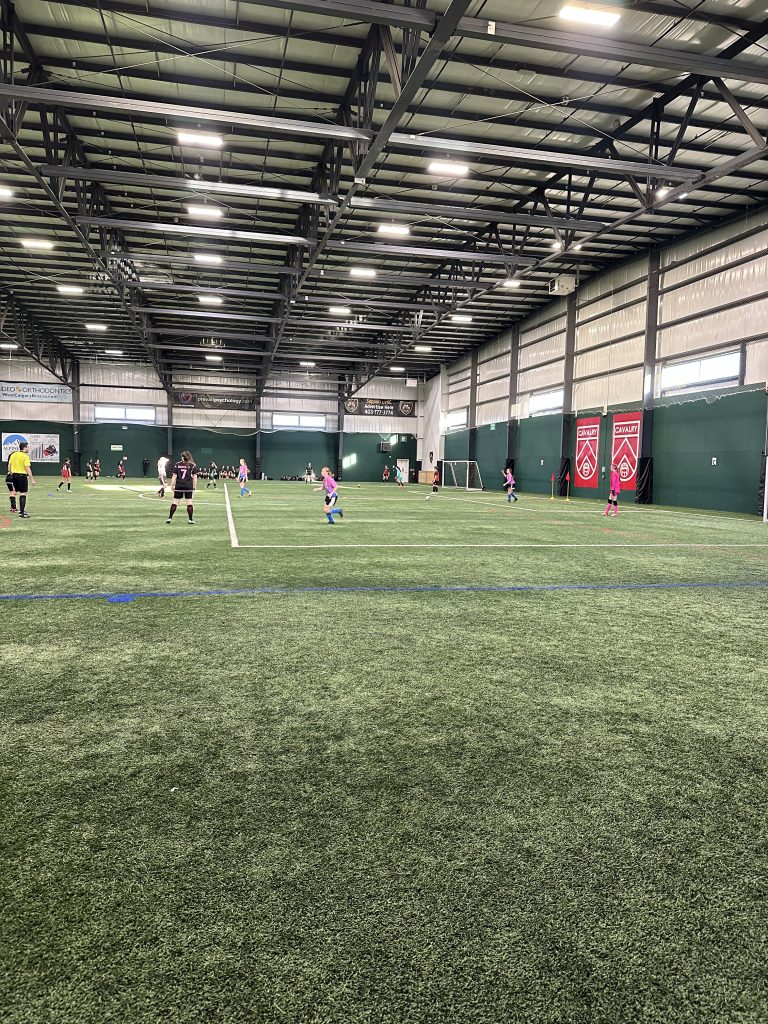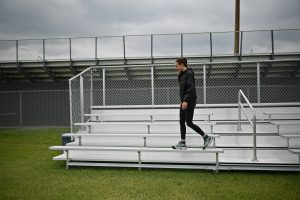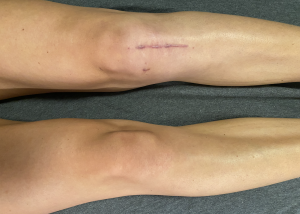ACLR Post-Op 2+ Years
At the end of 2021 I had ACLR (anterior cruciate ligament reconstruction) surgery with a bone-patellar-tendon-bone graft and a partial lateral menisectomy due to a buckle handle meniscus tear.
From 1 year post-op to 2 years
The first year for me I was locked in. I had the gym, my programming, and time to devote to completing all the rehab. All I was lacking was a team to be able to do sport specific training and contact drills with. I was able to get recreational levels of soccer for indoor and outdoor after 1 year post-op. But then my focused training decreased a bit – I didn’t have weights past a few kettlebells, I started programming myself and I was moving/traveling for a good part of the second year.
Looking back, it’s actually a good thing that I didn’t have higher level soccer as an option as I don’t think my knee would’ve loved the intensity.
At just over 2 years post-op, I’m back in the city and have been able to get baseline measures through ORKA and Plantiga to know where my deficits are. I’ve joined a gym for progressive loading and programming at Absolute Performance, and I’ve joined women’s soccer.


My aim is to keep building on my foundational base that I created in my first year of rehab and to reach an equilibrium between my knees that will set me up for a reduced re-injury or contralateral injury risk, fight the osteoarthritis risk in the future and to be able to play the sports I love.
The last 15%
2+ years post-op – at 18 months, I wrote I was 95% mentally there and 85% physically there.
The last 5% psychologically would only be reached by getting back to the level of sport that I fully want to be at, and playing at that level confidently. It is difficult to be able to say that I’m feeling 100% when I haven’t reached the level I want to be at, part of the last bit of confidence comes from doing the thing. That will be the last 5%.
In February this year, I found an indoor Division 1 women’s team so I was able to join for the last few games of the season. I always get the question ‘aren’t you worried about your knee?’ or ‘do you think about your knee when you play?’ and the honest answer is no – I’m not worried about it. What I DO feel is the fatigue and lack of endurance and power that I clearly still lack.
That’s where the last 15% physically will come – I need to get my endurance (play 90 minutes of high intensity soccer without knee symptoms) and power (push off and explosiveness) back before I can say my knee feels 100% again, or ‘back to normal’. A general mindset shift is that there is a ‘new normal’ as well. Ideally, this is actually stronger and more resilient than pre-injury state. For me, feeling ‘normal’ will be that I can play the amount of soccer I want to play without in-game or next-day soreness. Having gotten back to women’s soccer, I’d say I’m closer to 90% there.

The last milestone of sport for me is getting back to outdoor 11v11 women’s division 1 soccer – likely where the last 10% physically and 5% mentally will come from. Indoor isn’t quite the same, although the pace and intensity has been high. This is my goal for outdoor this spring (I’ll write another summary at the 3 year post-op mark to see how the return goes!)
For anyone going through this process, a very high percentage of injured athletes don’t make it back to the level of sport they played pre-injury even though that stat isn’t talked about a lot. So taking 2 or 3 years to build yourself back up isn’t a failure on your part, take the time you need.
Back to Sport
When you’re at this stage, it is essentially to set your ego aside. For me that meant: taking shorter shifts but trying to go hard in those short periods, not playing back to back evenings, not turning to negative self talk on the plays that I mess up or not being able to keep up with other players.
My body handled the return well enough but I’m battling a bit with left hip soreness and right achilles tendinopathy. From a physio perspective this usually means that the load is getting distributed elsewhere away from the injury (my left knee). So I also have to take this into account and do rehab for those pain areas accordingly, but understand that I might be pushing my knee too much too soon right away.
Moving Forward
Risk of second injury or contralateral injury is still quite high in years 2-5 post-op ACLR. Matt Jordan talks about the envelope of function and our injury risk profile: we can’t prevent injury per se, but we can do all we can control to reduce our injury risk profile. For me this means fueling well and fueling enough, having suffered from LEA in most of my late teens to mid 20s. Being diligent with training and rehab. Getting enough sleep while I navigate moving house again and a new job. My ACLR rehab isn’t the focus of my life anymore but it can’t be ignored.
If you just tore your ACL, the ACL Injuries ebook is the best place to start!


